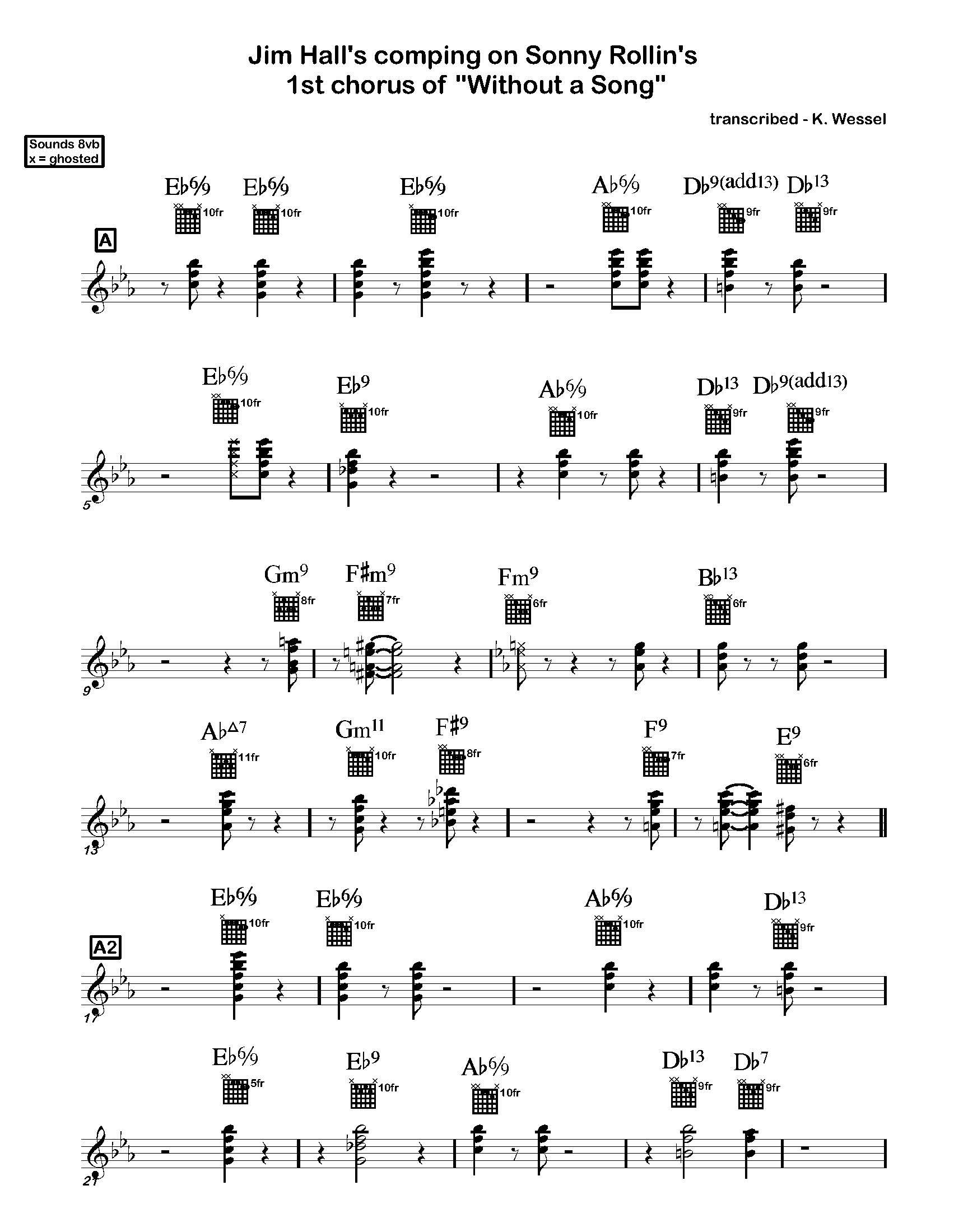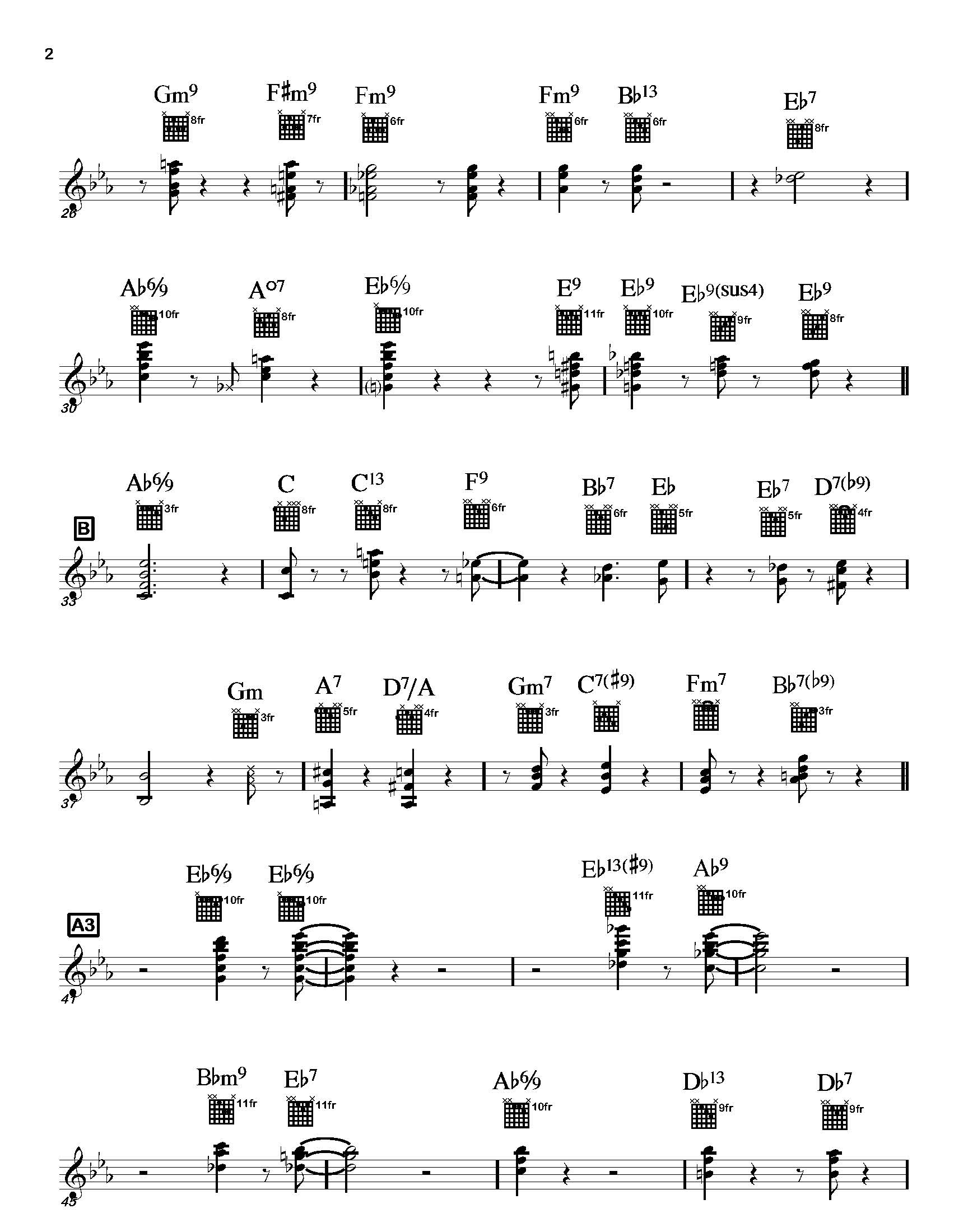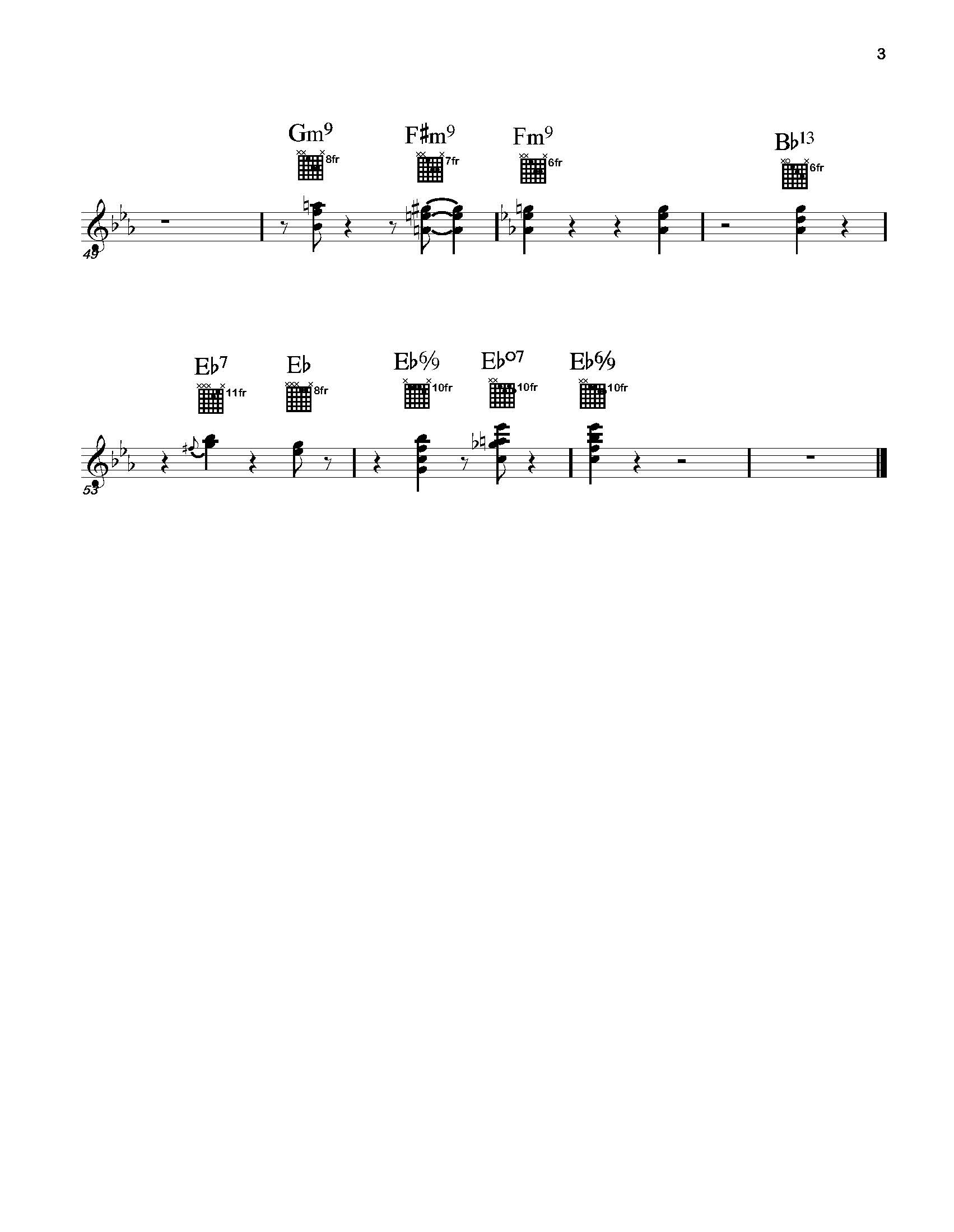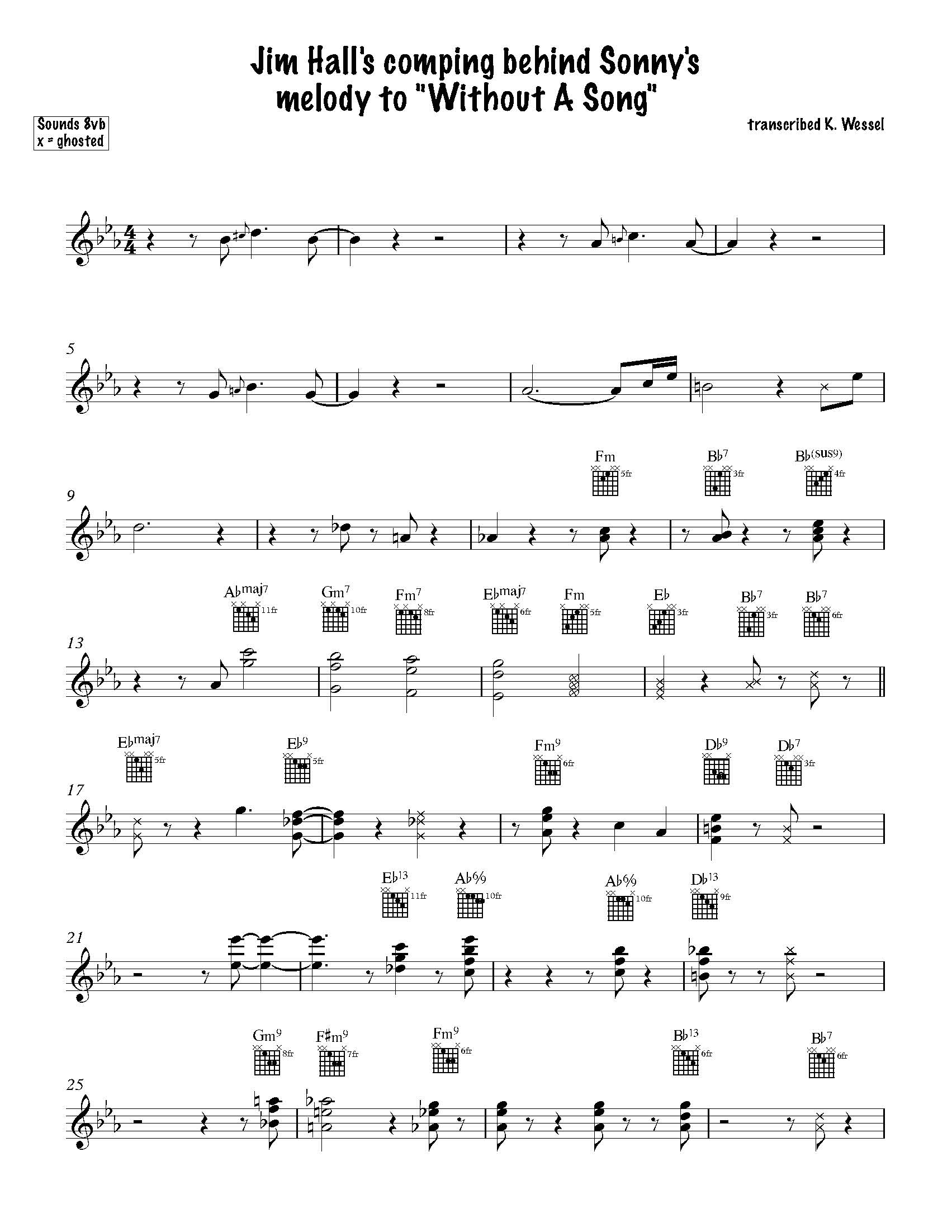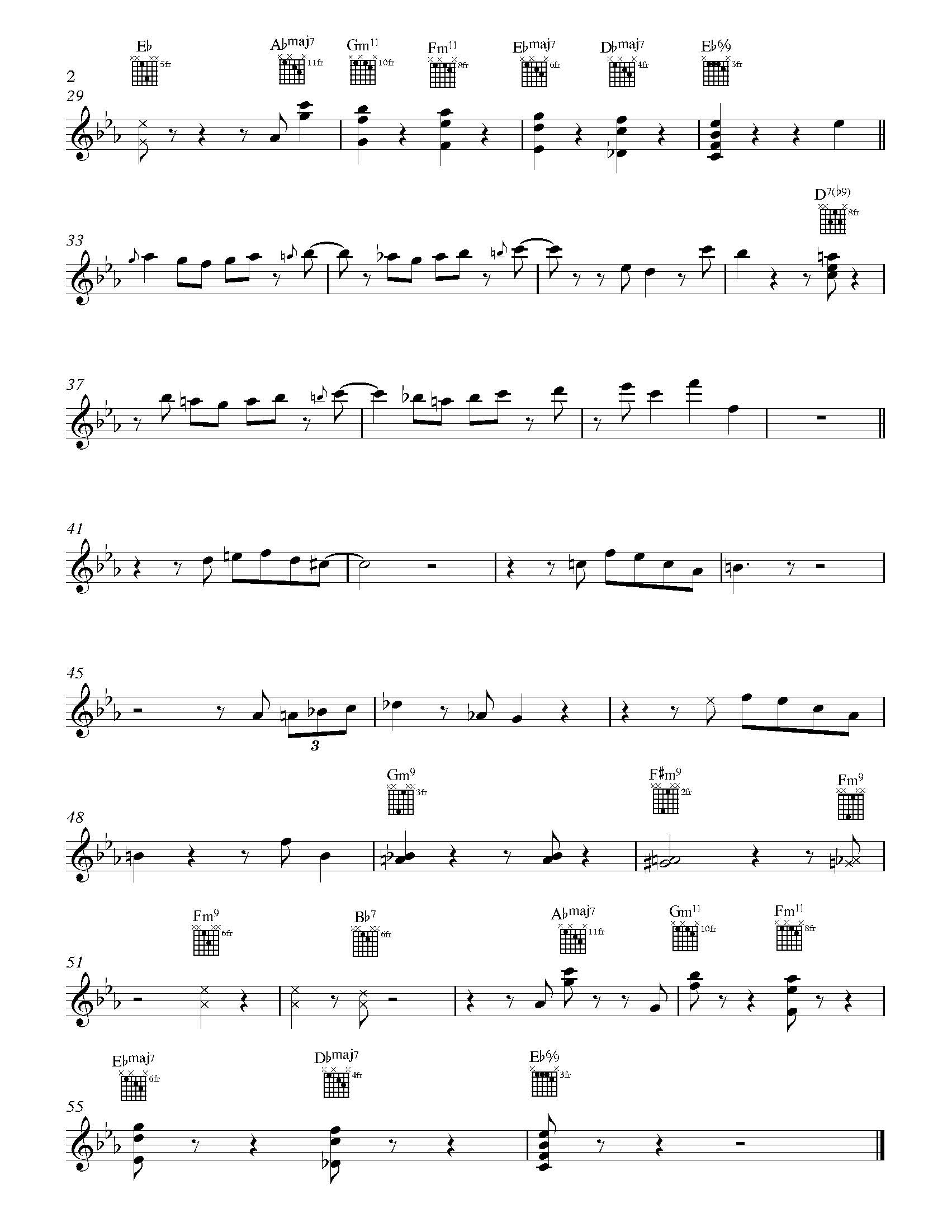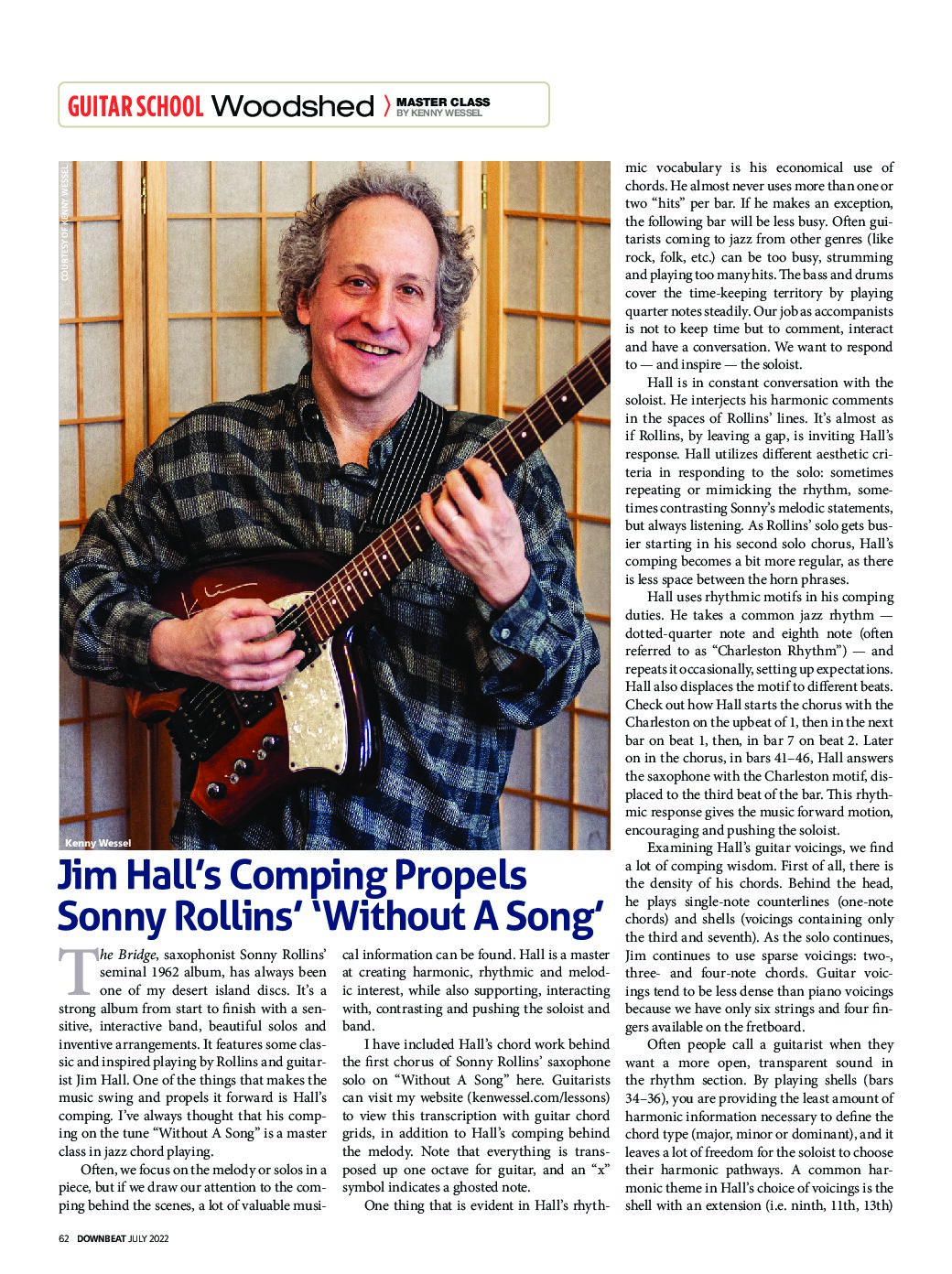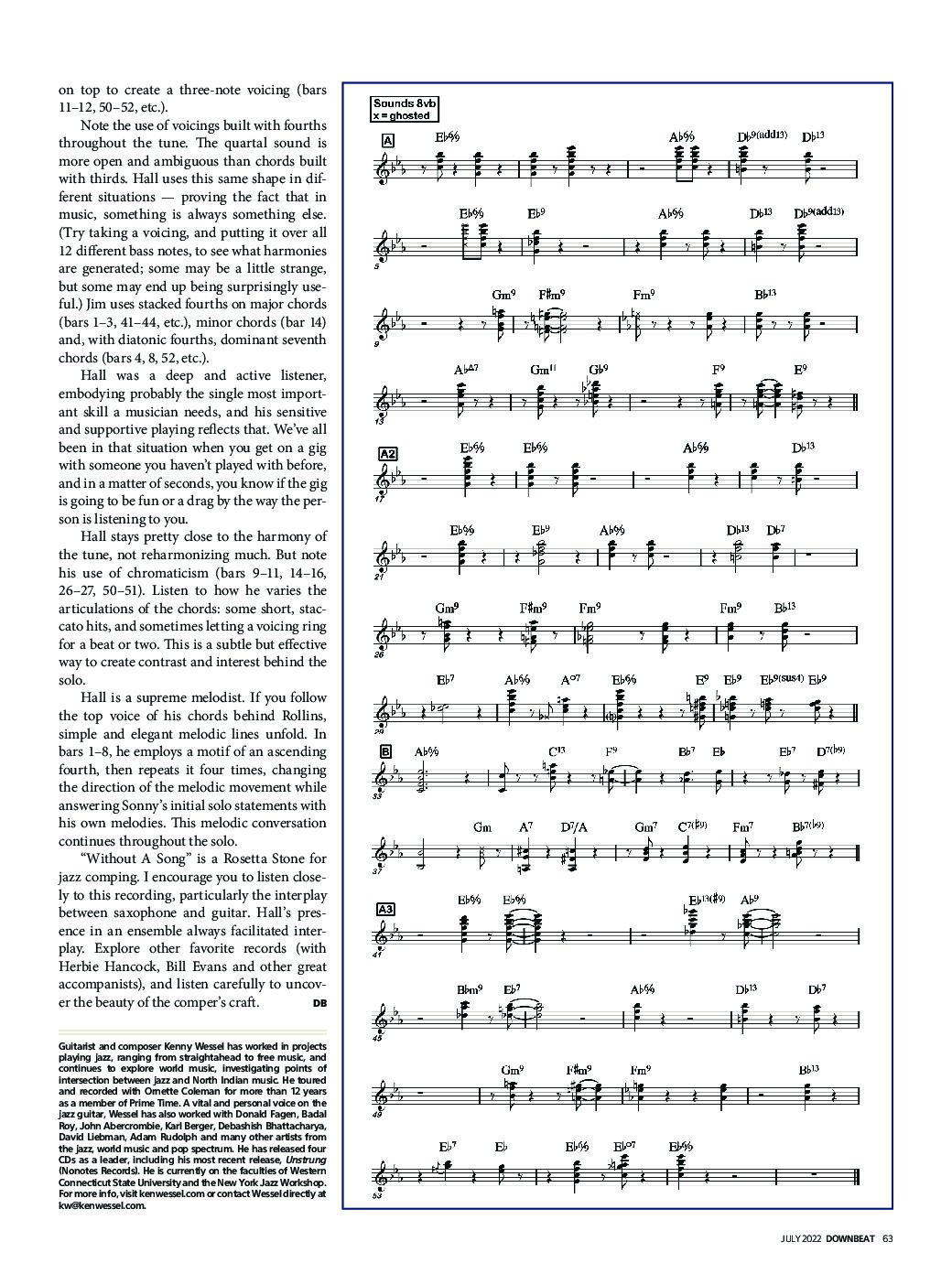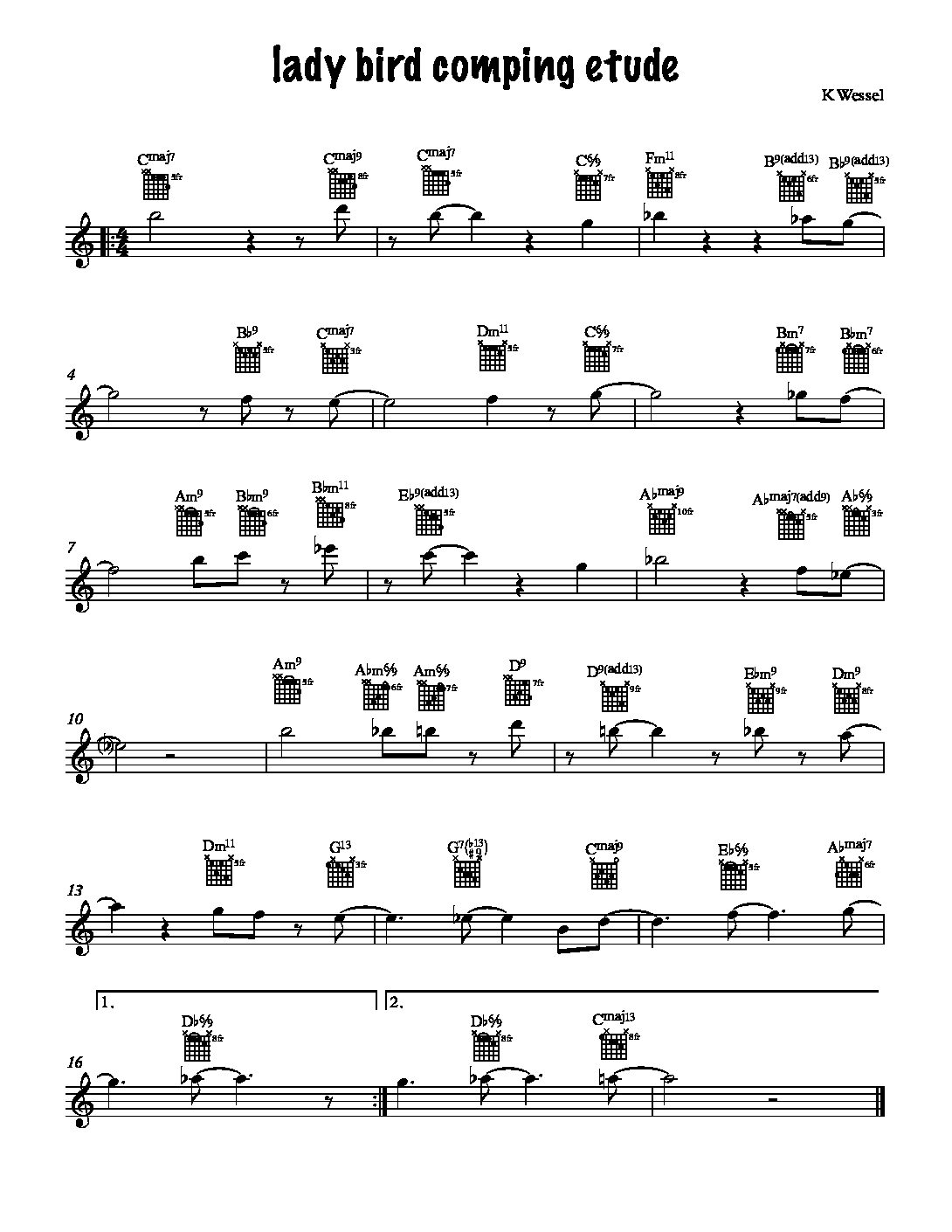Jim Hall’s comping on “Without a Song”
on Sonny Rollins’ The Bridge
Below is a transcription of Jim Hall’s chord work and comping behind Sonny Rollins on his 1962 masterpiece, The Bridge. Included above the notes are the chord grids for guitar. The music notation is written 8va for guitar (as the guitar sounds an octave lower than written; other instruments, when reading this transcription, should read and transpose down an octave to get concert pitch).
I have transcribed Jim’s comping in the first chorus of Sonny’s saxophone solo on “Without a Song.” Following that is Jim’s chord (and single-line) work behind the opening melody. Special thanks to good friends, Lisa Parrott and Jamie Fox for their eyes and ears in helping to prepare this transcription.
(Clicking on the transcription opens a larger page with a more legible version of the notation.)
Kenny Wessel
NYC, May, 2022
Lady Bird Comping Etude
This is an etude to help develop chord/comping chops, and get familiar with some useful voicings. It’s designed to be an example of what you might do when comping on a tune behind a soloist. It’s not a “chord melody” as the melody of the tune isn’t presented here, but the etude is melodic in the sense that the top voice of the chord creates a melody over the changes to Lady Bird. Since there is no solo happening here to accompany, it might be a little busier than I might play behind someone soloing, but it’s in the ball park. When I first moved to NY City, I had the good fortune to study with Barry Galbraith, one of the great jazz guitarists. We worked on building chord melodies, comping, reading, voice leading, etc., and he introduced me to this “comping etude” idea. In fact, Barry has a wonderful book (Guitar Comping Barry Galbraith Jazz Guitar Study Series Volume 3), available on Jamey Aebersold music, which I would highly recommend. I would also recommend his whole series of books, there are 5 of them.
I put the top note of the chord voicing in musical notation and included a chord grid for the whole chord, to facilitate learning. It’s important to play these etudes in time, and I would practice them with a metronome (on beats 2 and 4 preferably). It might be helpful to isolate 2-4 bars and try to get the voicings under your fingers and In time. Try to develop some facility with the voicings and play them smoothly and musically — being aware of the melodic movement (top voice). You can also grab some ‘chord licks’ from the etude and use them on other tunes. It’s helpful and instructive to analyze the voicings and see what makes them work – what chord tones, colors are in the chord, what is in the bass, what is being left out of the voicing, etc. Most importantly, find out which voicings or progressions speak to you and learn those around the guitar, in different positions, octaves, string sets, keys, etc., and incorporate those into your playing. Have fun and keep practicing!
Kenny Wessel
NYC, August, 2022

